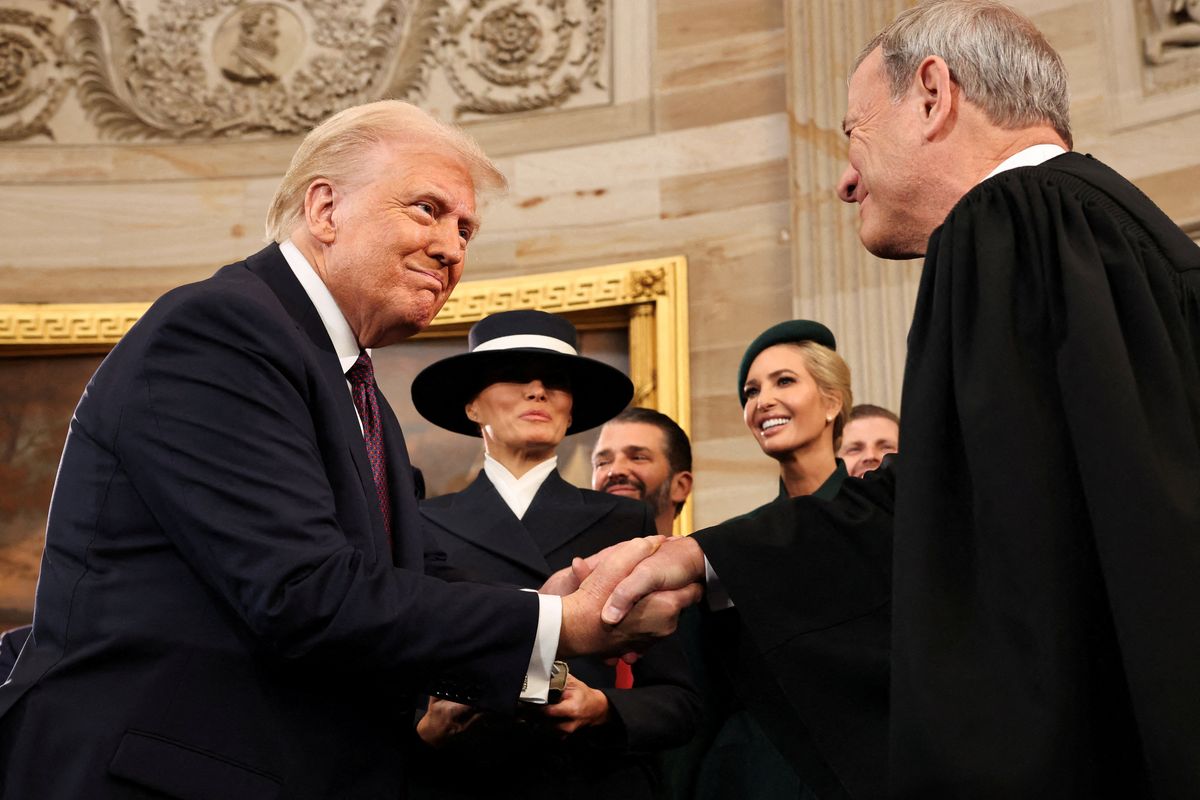
The U.S. Supreme Court has been intervening in President Donald Trump's ongoing assault on the law with "troubling" frequency, according to a pair of legal experts — even if the justices occasionally rule against him.
Slate's Dahlia Lithwick and Mark Joseph Stern discussed the first Supreme Court term of Trump's second presidency, and they agreed the justices have simultaneously sought to expand executive powers while also reining in the White House’s most lawless abuses.
"What’s really troubling here is not just that the court is constantly falling over itself to intervene in these Trump-related disputes," Stern said. "Not always on Trump’s side, but far too frequently for comfort."
"The big issue, though, is that when the Supreme Court hands down a decision over the shadow docket, it doesn’t have to just reach the merits and say: 'This is what’s right' and 'This is what’s wrong,'" Stern added.
"It gets to consider all of these squishy factors like the balance of the equities and irreparable harm. And it is super easy for the court to manipulate those squishy factors to justify a decision for Trump that does not follow what the law actually is — that has the impact of unsettling the law — but that, in the view of the court, seems just and fair with due deference to the presidency."
He pointed to a decision declaring that the leaders of two independent agencies must remain fired for as long as their challenges played out in court, which justice Elena Kagan slammed in her dissent as a misreading of how to balance harms and equities, and Lithwick said the court threw out a 90-year precedent in that same ruling without explaining why.
"I just want to make one quick point about emergencies: It’s all feelings-ball, right?" Lithwick said. "It’s all feelings, hunches and superstitions about which side’s claims to an emergency are more legitimate."
Stern agreed, and he said the justices were applying inconsistent standards to the cases they hear while trying to present themselves as "humble and nonpartisan" in the face of cratering public confidence in the court.
"The justices are taking pretty sharp swipes at each other, and some are calling these lower court judges hacks — just outright condemning them for standing in the way of Trump," Stern said. "I’m curious what effect you think this will have on the court’s own legitimacy as it battles for a place at the table while Trump gobbles up everything the court thought it had authority over, Pacman-like."
Lithwick gets the sense the justices were trying to decide as little as possible to avoid a direct confrontation with the president, but she said that clash was eventually inevitable.
"I think that as these emergencies keep crashing on the shore of the court, we’ll see the justices increasingly unable to render themselves invisible or inscrutable," she said. "You and I have been talking about when, exactly, we’ll be in a constitutional crisis. But that can only happen when the court actually does something, right? When it orders something and the administration says 'No, we’re not going to do that.'"
"We might not be there quite yet," Lithwick added. "But I don’t know that the justices can manage their public image and reputation by continuing to be incomprehensible, unreadable or jurisdictional. I just don’t think they can pull it off much longer without, at some point, rendering themselves irrelevant."





